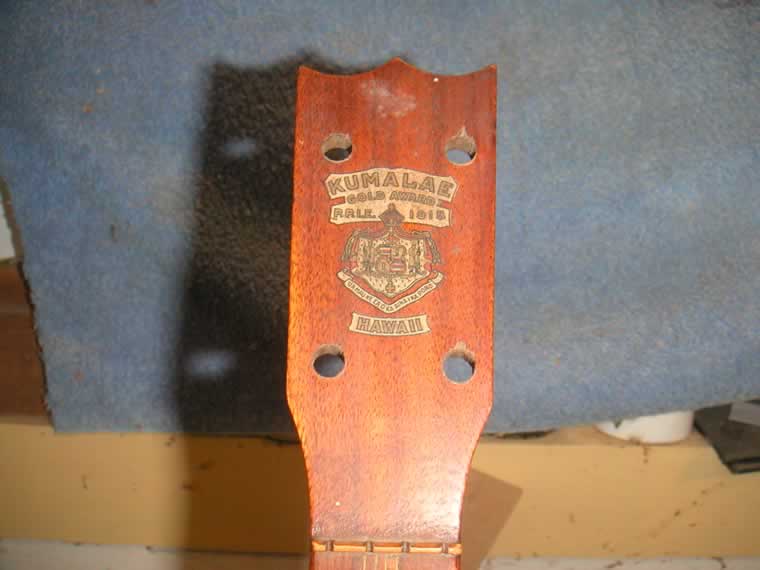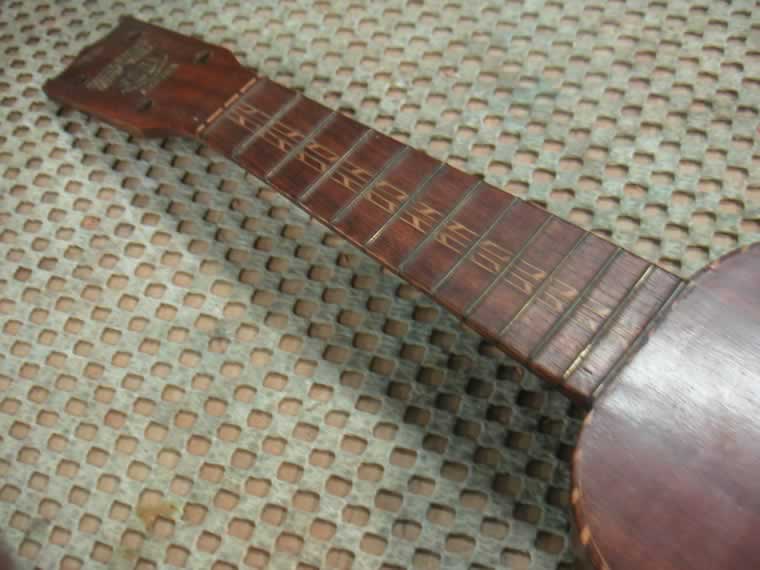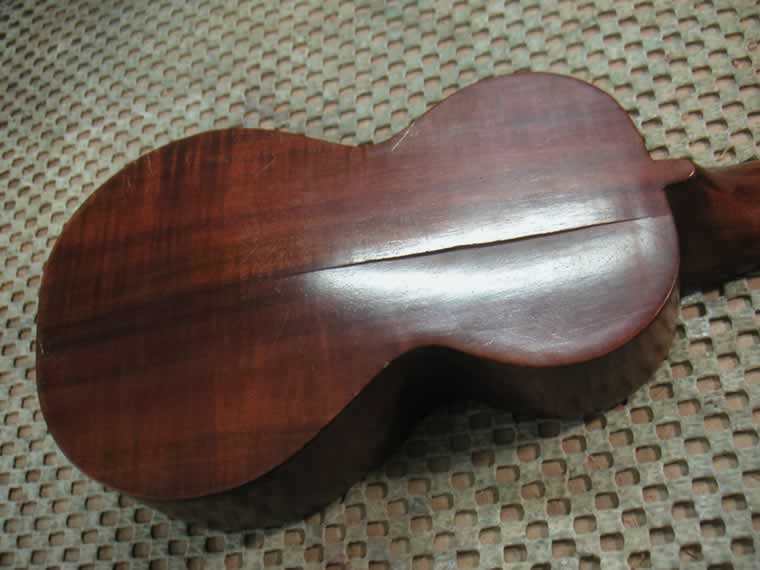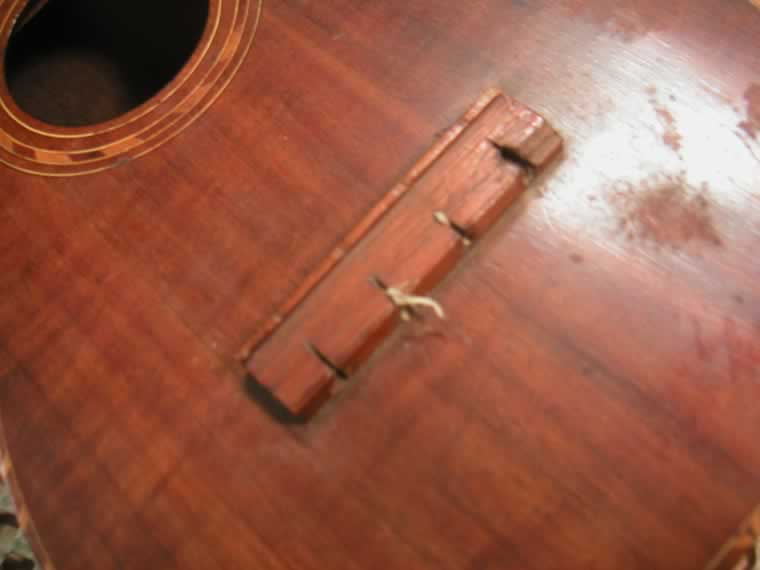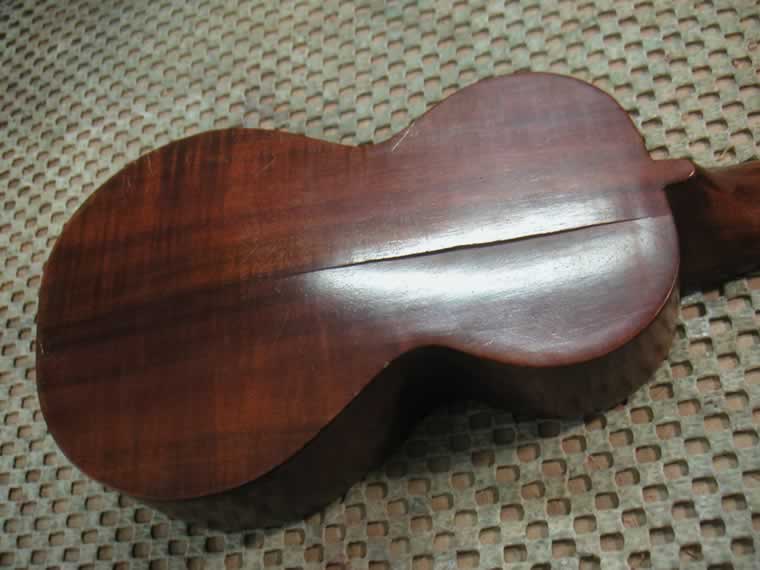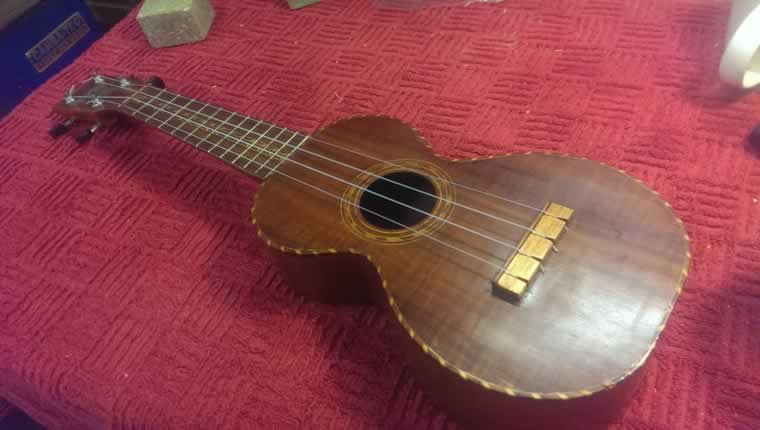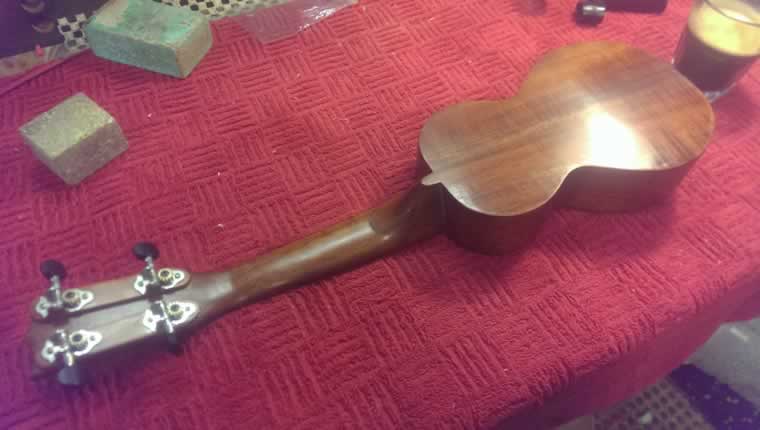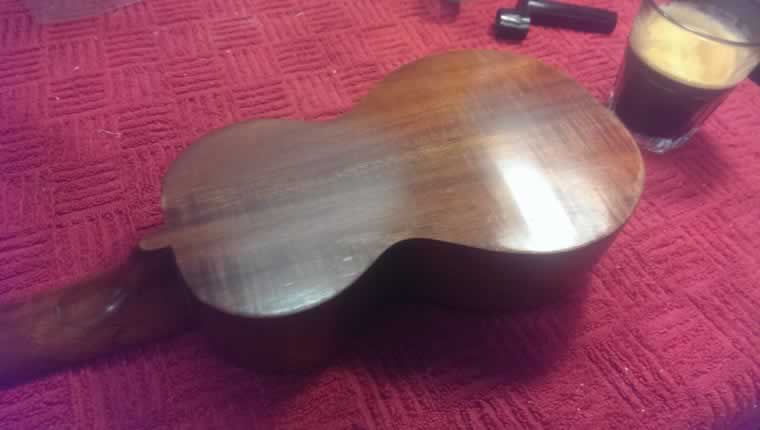Well I'll put my two bob's worth in. Bear in mind that I'm not the most experienced repairer here. Firstly, it's Koa wood, so you may get a match with blackwood. Someone here who uses koa might offer you a slither of scrap which you might put in with the wedge technique if you end up deciding to go down that path. I would not fill the gap with sawdust. There are many good videos of wedge repairing soundboards and backs on youtube.
The first step for me would be to rehydrate the instrument, which is very feasible as a uke will fit in a 20gallon bucket with a lid or a similar container. Even a plastic bag will do, and a little steam. If the gap closes up enough then try gently clamping the sides to see if the gap closes completely. If this turns out to be the case, some hot hide glue. If not, effect a crack repair with the wedge and the back in place. Double sided tape and a straight edge for wedging out the crack with a vee shaped scraper or knife. If you can completely close the gap with the clamping method after rehydrating, there will be minimum cosmetic work to do.
Then, to avoid taking the back off and/or for clamping in a centre seam, I would use pyramid cleats with the grain going at right angles to the grain of the back. Pyramid cleats have the following characteristics. They are light and strong. They can be positioned with a pointed piece of wire pushed into the apex of the pyramid, glue applied, then after positioning the wire can be quickly flicked out of the cleat, the vacuum formed by the glue holding the cleat in place. Hide glue helps even more if you hold a difficult cleat in place until the glue gells. (you can practice using a table cloth and a table fully loaded with fine china

)
The worst case scenario is to remove the back and rejoin with a piece of koa wood in the crack and a centre strip or cleats on the inside. I am assuming that like all those early ukes it has no back bracing and is slightly arched? If the back does have to come off, and is arched, you may have to support the arch on some kind of dished arrangement in order to do the wedge neatly.
The bridge probably doesn't need to come off, as it looks in your photo to only be damaged where the first string attaches. So a little neat inlay of koa on the damaged bit or even a new piece the length of the bridge will deal with that. I would avoid adding too much mass to either the bridge or the back. Spruce, koa or blackwood cleats inside the back will be fine.
To test for a nitro finish use the cotton bud in nitrocellulose lacquer thinners test. It is most likely a varnish or french polish and a bit of shellac would be my method. For most finishes it sticks like the proverbial baby **** to a blanket. -Ross
